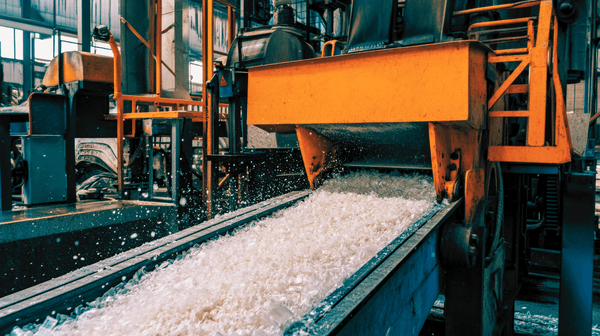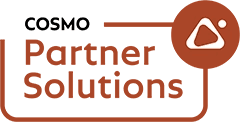Plastics Industry

Plastics manufacturing requires precision in recipe management, material alternatives, and reuse handling. With our solution, you can manage formulations with co-products and recycling, control batch processing in real time, and integrate sequence and resource planning into a unified schedule. Standardized instructions, maintenance planning, and vendor rating help reduce waste and improve throughput. End-to-end traceability, automated documentation, and built-in costing scenarios ensure efficiency, transparency, and scalability at every stage.
1. Manufacturing Specifications with Co-Products and Recycling: Design your production processes with precision and transparency. Define and manage formulations, bills of materials, and routings while ensuring full version control. Link specifications to costing, tooling, co-products, and recycling requirements to achieve consistent, efficient, and sustainable production runs.
2. Tool and Insert Management: Plan production runs with confidence by recording tool and insert details, tracking their performance, and automatically calculating expected output. Effortlessly switch between setups to optimize equipment usage and maintain smooth production flows.
3. Maintenance Management: Ensure machines are always in top condition without disrupting production. Schedule maintenance based on usage or time intervals, create work orders, and integrate them into your production plan. Visualize and adjust maintenance tasks easily with a drag-and-drop scheduler.
4. Sequence Planning: Optimize production flow by sequencing orders by item, machine, or tool to minimize setup times and reduce downtime. Integrate cleaning, changeover, and maintenance operations into a single plan to maintain efficiency.
5. Resource Scheduling: Maximize the utilization of your workforce and machines. Assign tasks based on skills, availability, and priorities, balancing workloads across shifts and departments to ensure optimal operation.
6. Standardized Production Instructions: Provide clear, standardized instructions directly to the shop floor. Link production steps to specifications, ensuring operators always have accurate and up-to-date guidance for faster, safer, and more consistent work.
7. Vendor Rating: Foster stronger supplier relationships with transparent evaluations. Rate vendors on performance, reliability, delivery accuracy, and qualitative factors. Use objective data to select partners who align with your standards and support your growth.
8. Quality Control: Incorporate quality assurance into every production step, from raw materials to finished goods. Define inspection plans, record test results, and manage non-conformances within your ERP system. Achieve full traceability, compliance, and customer satisfaction with fewer rejects and rework cycles.
9. Release, Quarantine, and Traceability: Track every batch from material input to final product. Manage release and quarantine statuses to maintain quality control and regulatory compliance. Full traceability ensures quick responses to audits or customer inquiries.
10. Customer Specifications and Certificates: Exceed customer expectations by generating product-specific certificates automatically and organizing all documentation for audits. Ensure every shipment includes accurate, compliant, and traceable paperwork.
11. Cost and Price Calculation Scenarios: Make informed pricing decisions by simulating and comparing production costs across materials, routes, and volumes. Evaluate "what-if" scenarios instantly to identify the most profitable setups and maintain competitiveness in every market.
Nutrition Industry
- Manufacturing Specifications with Co-Products and Nutrition Precisely define and control every recipe. From formulations and ingredients to nutritional values and allergens, ensure your production is transparent, compliant, and repeatable. Seamlessly connect specifications to costing, co-products, and substances.
- Batch Processing Confidently plan and manage every batch. Balance ingredients, control lot sizes, and maintain consistent quality across all production runs.
- Maintenance Management Keep your production running smoothly with scheduled maintenance based on time or machine usage. Visual drag-and-drop scheduling ensures you always know what's happening and when.
- Sequence Planning Optimize production flow by planning operations based on product specifics, machine requirements, or customer priorities. Reduce changeover times and keep your lines efficient.
- Resource Scheduling Maximize the potential of your team and equipment. Assign resources based on skills and availability, balancing workloads to ensure efficiency.
- Standardized Production Instructions Provide clear, consistent instructions linked to recipes and production steps. Ensure compliance, safety, and accuracy every time.
- Vendor Rating Build strong partnerships by evaluating suppliers based on performance and reliability. Make data-driven decisions to choose the right vendors.
- Quality Control Integrate quality checks throughout your process. Record results digitally, manage non-conformances, and ensure compliance with standards.
- Release, Quarantine, and Traceability Safeguard food safety with full batch traceability. Manage release and quarantine processes effectively, responding confidently to audits or recalls.
- Customer Specifications and Certificates Automatically fulfill customer requirements with accurate documentation. Generate certificates and keep everything audit-ready.
- Cost and Price Calculation Scenarios Simulate different scenarios to make informed decisions about pricing and production costs. Stay competitive and profitable from concept to final product.

Food and nutrition manufacturers face complex recipe structures, allergen management, and quality control requirements. Our solution enables accurate formulation based on nutritional values, integrates co-products and allergen tracking, and supports reliable batch control from input to output. With built-in scheduling, traceability, and quality assurance tools, you can ensure consistency and compliance while meeting customer and market demands. Digital documentation and pricing simulations help optimize margins and streamline audit readiness.
Chemicals Industry

Chemicals manufacturing relies on precision, batch control, and consistent quality. With our solution, manufacturers can manage recipe-based formulations, streamline the transition from lab to production, and ensure traceability from raw materials to final product. Built-in tools support intelligent planning, optimized resource usage, and standardized production instructions, making it easier to deliver repeatable, scalable, and cost-efficient production across all batch sizes.
1. Manufacturing Specification with Integrated Recipe Management: Streamline your production by defining and managing precise formulations. With version control and direct integration to costing, inventory, and scheduling, you ensure transparent and reproducible production processes.
2. Seamless Scale-Up from Lab to Production: Transition effortlessly from lab trials to full-scale production. Simulate costs, refine specifications, and ensure a smooth scale-up process.
3. Batch Processing Excellence: Plan and control every batch with precision. Manage lot sizes, balance substances, and maintain consistent quality across all production runs.
4. Intelligent Sequence Planning: Optimize production order prioritization. Integrate setup, cleaning, and maintenance tasks to minimize downtime and enhance plant efficiency.
5. Optimized Resource Scheduling: Assign personnel, tools, and resources effectively based on skills and availability. Maximize workforce and equipment utilization across shifts and operations.
6. Standardized Production Instructions: Provide clear and consistent production instructions. Deliver precise guidance at the specification level, directly integrated into the production process.
7. Vendor Rating for Stronger Partnerships: Evaluate suppliers objectively using performance metrics, soft criteria, and delivery data. Build reliable and robust supply chain partnerships.
8. Integrated Quality Control: Embed quality checks at every stage, from goods receipt to final release. Ensure compliance and reduce rework with ERP-integrated inspections.
9. Release, Quarantine, and Traceability: Maintain full transparency by tracking each lot from raw material to finished product. Manage release status and quarantine effectively to uphold product standards.
10. Certificates of Analysis (CoA): Automatically generate customer-specific CoAs. Keep documentation organized, traceable, and audit-ready at all times.
11. Cost and Price Calculation Scenarios: Simulate and compare production costs instantly. Make informed, data-driven pricing decisions throughout the product lifecycle.
Coatings & Paint Industry
- Manufacturing Specifications and Recipe Management Gain complete control over your formulations. Define precise recipes, adapt them effortlessly to various batch sizes, plants, or packaging formats, and link them directly to costing and raw materials. Ensure transparent, reproducible, and compliant production processes from lab scale to full-scale manufacturing.
- Batch Processing and Bottling Plan, monitor, and execute each batch with precision. Manage lot sizes, maintain consistent quality, and handle diverse packaging formats while ensuring full traceability from mixing to filling.
- New Product Development Accelerate your innovation cycle. Use R&D tools to design, calculate, and compare formulations. Simulate costs and target prices, analyze historical data, and refine specifications during pilot runs for a seamless scale-up.
- Sequence Planning Optimize production flow. Prioritize orders based on product attributes like color, viscosity, or machine requirements. Integrate setup, cleaning, and maintenance into your schedule to minimize downtime and maximize throughput.
- Resource Scheduling Maximize the efficiency of your workforce and equipment. Schedule teams, tools, and resources based on skills, qualifications, and availability. Balance workloads across shifts and ensure tasks are assigned to the right personnel at the right time.
- Standardized Production Instructions Enhance clarity on the shop floor. Create standardized, easy-to-follow instructions directly from your specifications. Equip operators with the right information to improve safety, consistency, and quality.
- Vendor Rating Foster stronger supplier relationships. Evaluate vendors based on performance, reliability, and delivery accuracy. Use objective data and qualitative insights to make informed decisions and enhance supplier quality.
- Quality Control Integrate quality into every production step. Define inspection plans from goods receipt to final release, linking them directly to ERP workflows. Detect deviations early, ensure compliance, and reduce costly rework.
- Release, Quarantine, and Traceability Maintain control over every lot. Track materials from incoming goods to finished products, manage release status and quarantine seamlessly, and ensure full traceability and consistent product standards.
- Customer Specifications and Certificates Meet customer expectations consistently. Automatically generate customer-specific certificates and documentation, keeping records organized, audit-ready, and accessible when needed.
- Cost and Price Calculation Scenarios Make confident pricing decisions. Simulate cost scenarios, compare options, and analyze profitability in real time. Understand the impact of every decision on your bottom line, from raw materials to finished goods.

Coatings production involves recipe variation, packaging complexity, and strict quality requirements. Our solution enables you to manage production at scale by defining and controlling your formulation process, sequencing operations for maximum efficiency, and integrating quality checks across each stage. With full traceability, packaging batch handling, and standardized shop floor guidance, you can meet customer expectations while optimizing throughput and maintaining consistent product quality.

Still have questions?
No worries. We are here to set your mind at ease and answer any questions you may have. Get in touch with our representatives and they will be happy to address any questions or concerns you may have.


